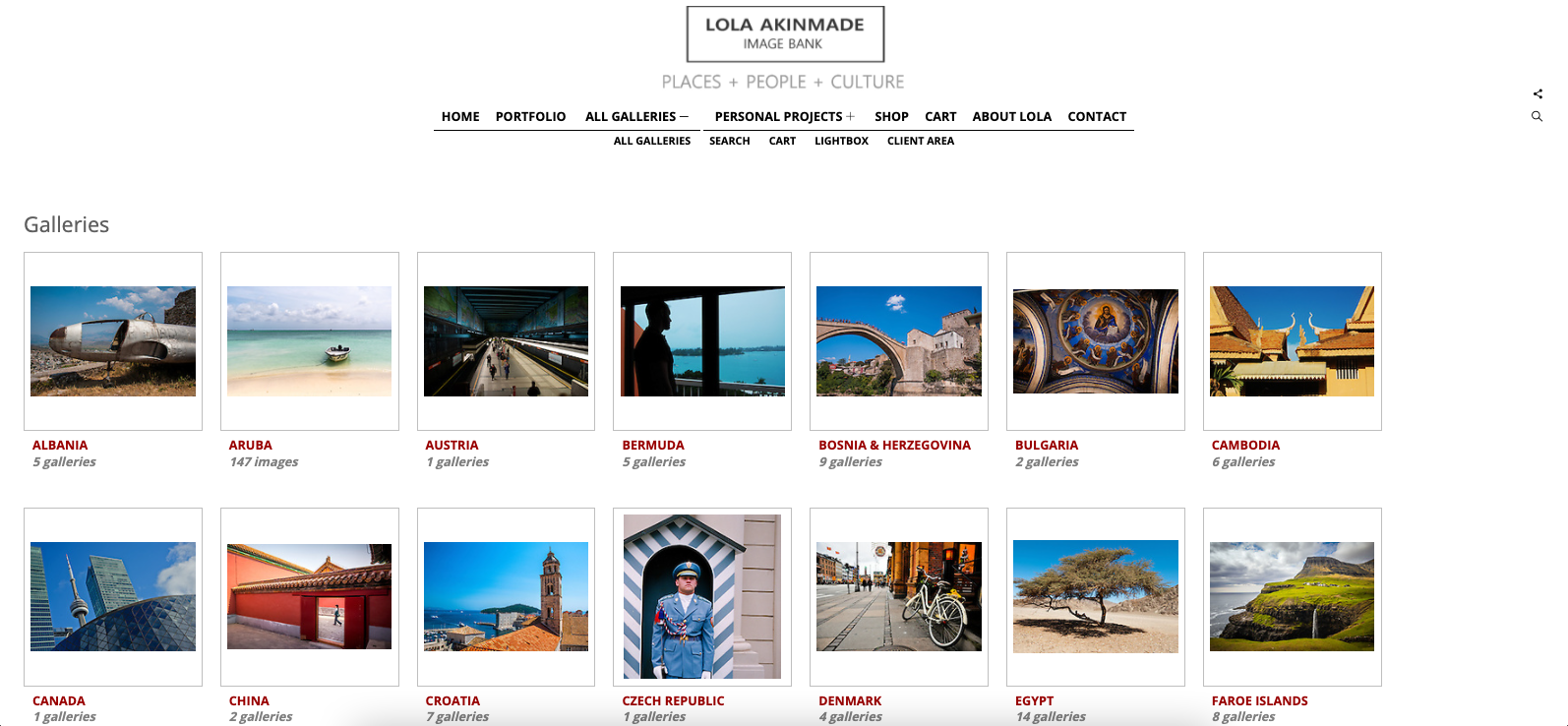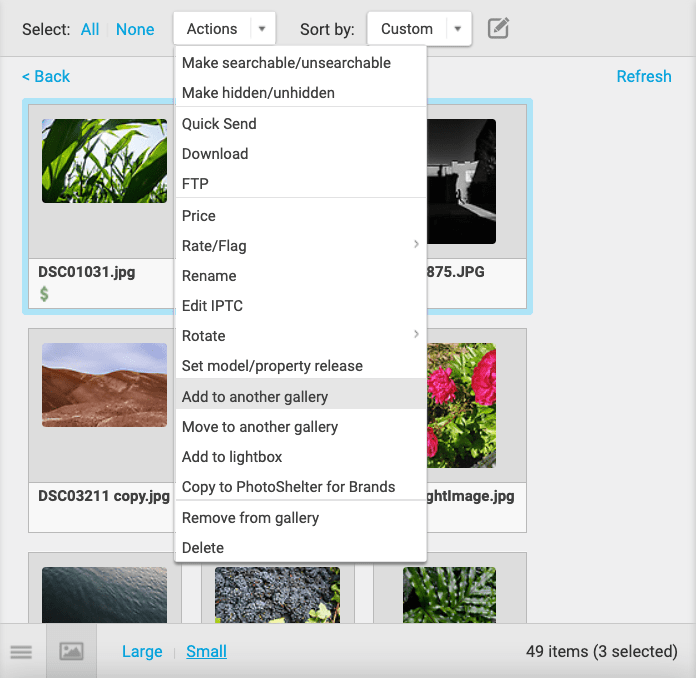Share
Get Hired: Harnessing the Power of Social Media and Your Archive
How can you distinguish yourself from other photographers? That’s the essential question every photographer embarking on a marketing strategy sho...

How can you distinguish yourself from other photographers? That’s the essential question every photographer embarking on a marketing strategy should be asking. But when it comes to a dedicated marketing strategy, there are a lot of options: email newsletters, printed promos sent via snail mail, social media posts, networking at in-person or virtual events, even cold calling editors.
What’s your plan for finding potential clients and photo editors? What are the ways in which you can get ahead of your competition? What point of view or unique skills do you offer the industry? Or, if you’re just starting out, think about which photographers are memorable and explore why.
The first thing to do is get comfortable with selling yourself. It’s a simple task on its face, but creating the right approach to showing your skill and personality takes some finesse. Below, we’re sharing the insights of two talented photographers, Lola Akinmade Åkerström and Aundre Larrow. They’re breaking down how they approach social media and providing their thoughts on how to get more out of the photos you’ve already made.
Not all social media is created equally
When we think about photography and social media, for better or worse most people immediately think of Instagram. Ten or even five years ago, Instagram reigned supreme when it came to marketing your photography. Using popular hashtags, geotags and direct comments, you could amass quite a following.
But these days, Instagram is being transformed into a shopping app, and when it comes to promoting your posts to the feeds of your followers (and hopeful followers), the ever-changing algorithms care about money more than quality content. You have to pay to play, plain and simple. That said, it’s still a great app to share work, but we wouldn’t necessarily recommend it as the #1 marketing app for photographers hoping to land their next big gig.
Enter Twitter and LinkedIn.
For editorial photographers, getting on the radar of editors is priority number one. Follow editors you like and interact organically with them. Don’t be fake. Flattery goes a long way, but only when done in a genuine way.
Recently we caught up with marketing powerhouse and travel photographer Lola Akinmade Åkerström about her approach to marketing. She’s someone who appears to be everywhere all the time, so we wanted to get her take on which platforms to focus on and how she manages to land some of the coolest jobs in the industry.
Lola suggests a three-step approach to using Twitter for making contact: follow editors you know you want to work with, then engage with their content authentically, then email them (3-7 days after engaging).
“Especially with well-established publications, it can be really difficult to break in because those editors already have existing relationships with photographers,” Lola says. “Twitter allows you to follow—without being a stalker!—the editors you like. Listen to their chatter and see what projects they’re working on and what kinds of conversations they’re having. Interact organically, meaning if there’s something that really interests you, interact with that content. After you follow them (and if your portfolio matches what they’re doing), about three days later, then email the editor. They get lots of emails but because you’ve interacted with them already, there will be a kind of instant subconscious recognition, and they’re more likely to open up your email,” she says.
Twitter is also a great place to share how-to content, personal projects, behind-the-scenes stories or videos, and compliment fellow photographers on their work and latest projects using threads. Those allow you to provide more context and show more personality or gratitude, which all can help push you ahead when it comes to landing your next gig. Editors follow plenty of photographers, so the more you’re interacting with your peers’ work, the more likely you are to create the subconscious association Lola talks about.
LinkedIn, while having been around for years, still seems to be the forgotten platform for many creatives. Created as a business networking platform and often evoking an image of hungry salespeople or hopeful recent graduates, it’s always been a bit of a mystery as to why more photographers aren’t using it to promote themselves and their work.
For photographers, it’s a great way to find the names of editors associated with dream publications and brands. Especially for commercial photographers, it’s helpful for determining who works for the marketing team of the brand you’re hoping to work for. With those teams almost always in charge of hiring and managing freelancers, using LinkedIn is an easy way to get to know those individuals and appeal to them. Using a platform as designed has incredible value when networking is such a key component to professional photography.
To appeal to creatives, LinkedIn recently launched their “Creator Mode,” whereby you can build your audience through opt-in features like a “Follower” button, select the topics you can plan to talk about and more. While currently a paid feature, the first month is free and definitely worth a shot if you’re curious about how to harness more from your LinkedIn contacts and profile.
“LinkedIn is special because people are actually trying to hire folks there. Often I think people get caught up worrying about coming off as needy on social media when they’re trying to make professional contacts and grow those relationships. But LinkedIn was built for that, the point of it is to talk about the work you’ve done to hopefully get hired again. It’s a unique space for creatives. Put yourself out there and show everyone the quality of your work.”
Aundre Larrow
It’s worth noting that while we’ve already stated that Instagram isn’t the #1 marketing app, it remains a great way to build relationships with the brands you want to work for. It still offers exposure opportunities if you’re focused in your approach. When done tactfully, an Instagram takeover allows your work to get on the feeds of thousands (and potentially millions depending on the company).
If you’ve collected the contacts and are reaching out via email to make an introduction, Lola recommends pitching yourself to companies and asking if they’re interested in a takeover. “A lot of photographers don’t want to share their work for free, I get it. But if there is a brand that has thousands of followers, chances are the people following that brand are probably potential customers and clients for you,” she says. Editors are known to follow one another (and each other’s brands) on Instagram, so finding ways to leverage that is key when it comes to your strategy on that platform.
We’re not saying to do Instagram takeovers 24/7. Instead, it’s all about weighing how much you believe the exposure you might get from one brand’s following is worth.
Getting the most mileage out of your photos
Once you’ve got your contacts, or at least the strategy to make contact, the next step is thinking critically about how you might be able to use your existing archive to get hired. Getting hired to make photos on assignment is one thing, but tons of brands and publications are looking for photos to match content that’s already been written. That’s where images from personal projects, trips you’ve taken, etc. can make you some money.
If you have regional expertise but you don’t necessarily have a story to pitch, plenty of publications have photographer call out lists. With those, when they’re looking for a certain type of imagery or story, they blast out to their mailing list to say what they’re looking for [region/subject] and wait for submissions to come in.
Once you have the email of an editor or creative team, reach out and let them know you’re available and want to be added to their call out list or database. According to Lola, something as simple as “I’m a photographer based in [location] and have spent a lot of time in [region], can you put me on your call out list?” goes a long way. Be polite, direct and gracious. After all, being easy to work with is what’ll get you rebooked for jobs or referred by one editor or team to another.
If you’re looking to adopt this approach, her advice is to think critically about how you organize your website and archive. Consider organizing your website or archive by region or subject matter to make it easier for clients to find the type of content they’re looking for. You can also showcase the work you’ve already done for other brands on your site to add some credibility.


This is also where metadata comes in. Whether you enter it in Lightroom or another program during post-processing, or you add your IPTC metadata after uploading into your PhotoShelter account, metadata is what will give your work some extra legs.
Admittedly not the sexiest work and often overlooked, keywording your images is key to finding the content quickly for editors. After searching your archive, consider creating a custom gallery for editors to look through the photos you have to offer. To do this in PhotoShelter, you can select an image or set of images from a search, click the “Actions” menu and then click “Add to another gallery” and rename that for your client. This approach makes you look professional and organized, which can help you land a job over another photographer.

(Not to mention those keywords also help with SEO, which is another way to grab the attention of potential clients!)
Getting great results from your use of Twitter and LinkedIn? Have other successful marketing strategies we didn’t touch on here? I’d love to keep the conversation going in the comments below and on Twitter @photoshelter. We hope to continue to feature photographers and their unique approaches to marketing!


